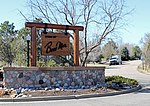The Columbine High School massacre, commonly referred to as Columbine, was a school shooting and attempted bombing that occurred on April 20, 1999, at Columbine High School in Columbine, Colorado, United States. The perpetrators, twelfth-grade students Eric Harris and Dylan Klebold, murdered twelve students and one teacher. Ten of the twelve students killed were in the school library, where Harris and Klebold subsequently committed suicide. Twenty-one additional people were injured by gunshots, and gunfire was also exchanged with the police. Another three people were injured trying to escape. The Columbine massacre was the deadliest mass shooting at a K-12 school in U.S. history, until it was surpassed by the Sandy Hook Elementary School shooting in December 2012, and later the Robb Elementary School shooting in May 2022, and the deadliest mass shooting at a high school in U.S. history until the Parkland high school shooting in February 2018. Columbine still remains both the deadliest mass shooting and the deadliest school shooting to occur in the U.S. state of Colorado.
Harris and Klebold, who planned for at least a year and hoped to have a large number of victims, intended for the attack to primarily be a bombing and only secondarily a shooting. But when several homemade bombs they planted in the school failed to detonate, the pair launched a shooting attack. Their motive remains inconclusive. The police were slow to enter the school and were heavily criticized for not intervening during the shooting. The incident resulted in the introduction of the immediate action rapid deployment (IARD) tactic, which is used in active-shooter situations, and an increased emphasis on school security with zero-tolerance policies. Debates and moral panic were sparked over American gun culture and gun control laws, high school cliques, subcultures (e.g. goths), outcasts, and school bullying, as well as teenage use of pharmaceutical antidepressants, the Internet, and violence in video games and movies.
Many makeshift memorials were created after the massacre, including ones employing victims Rachel Scott's car and John Tomlin's truck. Fifteen crosses for the victims and the shooters were erected on top of a hill in Clement Park. The crosses for Harris and Klebold were later removed following controversy. Planning for a permanent memorial began in June 1999, and the resulting Columbine Memorial opened to the public in September 2007.
The shooting has inspired dozens of copycat killings, dubbed the Columbine effect, including many deadlier shootings across the world. The word "Columbine" has become a byword for school shootings.











